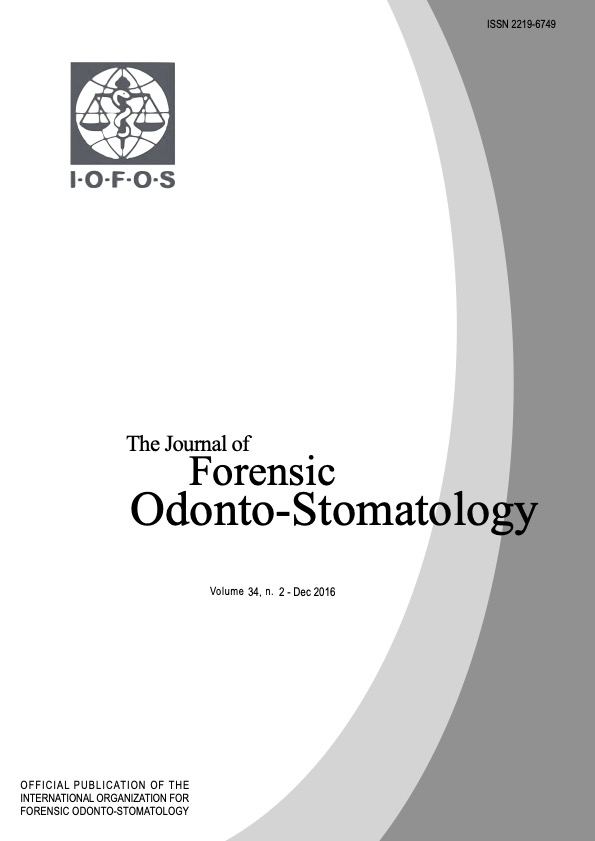A Comparative Evaluation Of The Applicability Of Two Adapted Häävikko Methods For Age Estimation Of 5-15 Year Old Indian Children
Keywords:
Häävikko method, Adapted Häävikko method, Age estimation, Indian childrenAbstract
ABSTRACT
Dental age determination methods that require the assessment of all teeth are tedious and time- consuming. Adapted methods that assess fewer teeth may be more easily applicable. The present study compared the applicability of two adapted Häävikko methods which evaluate seven mandibular teeth (HAM1) and four reference teeth (HAM2) in a population of 5 to 15 year-old Indian children. The HAM1 method underestimated age by -0.17 ± 0.80 years, -0.29 ± 0.83 years and -0.22 ± 0.82 years in boys, girls and the total sample respectively, while the HAM2 method underestimated age by -0.34 ± 0.88 years, -0.51 ± 0.82 years and -0.41 ± 0.86 years in boys, girls and the total sample, respectively. Significant gender-based differences were observed in mean DA-CA with both methods (p < 0.05). While both methods could be used for age estimation of the present population, the HAM1 method was the more accurate of the two.

